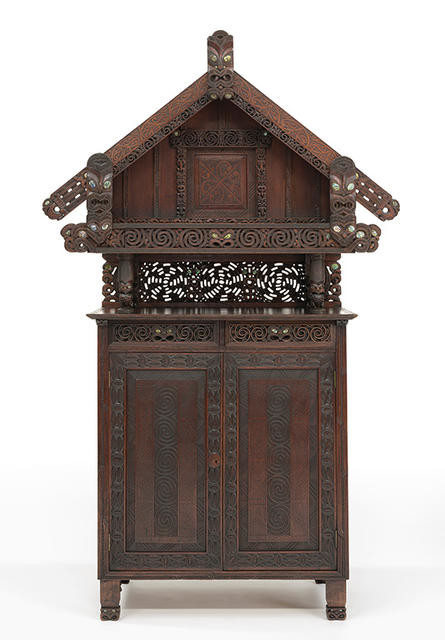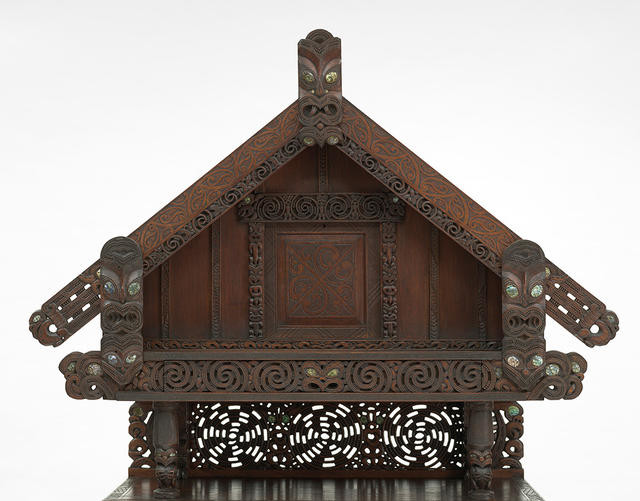John Henry Menzies
England / Aotearoa New Zealand, b.1839, d.1919
Stanford Family Pātaka Cabinet
- c. 1895
- Wood, pāua shell
- Collections of Akaroa Museum (with assistance from the Friends of Akaroa Museum) and Christchurch Art Gallery Te Puna o Waiwhetū, jointly purchased 2019
- 2218 x 1348 x 505mm
- 2019/012.a-q
Tags: Māori (culture or style), pātaka, patterns (design elements), spirals (geometric figures)
John Henry Menzies first took up woodcarving as a youth in Lancashire, England. He immigrated to Aotearoa New Zealand aged twenty-one in 1860, and began farming on Te Pātaka o Rākaihautū / Banks Peninsula in 1877. Menzies’ interest in Māori art began in about 1882. He is unlikely to have encountered whakairo (carving) and kōwhaiwhai (rafter patterns) as living traditions until visiting Ōhinemutu in Rotorua five years later. Captivated by what he felt were endangered art forms, he filled two of three houses he built at Kiri-kiri-wairea / McIntosh Bay (later Menzies Bay) and a church at Little Akaloa with extraordinary Māori-inspired furniture and decoration. His most spectacular pieces were made for family members – this highly decorative pātaka cabinet was made for his daughter Charlotte and her husband Edwin Stanford.
(Te Wheke, 2020)




